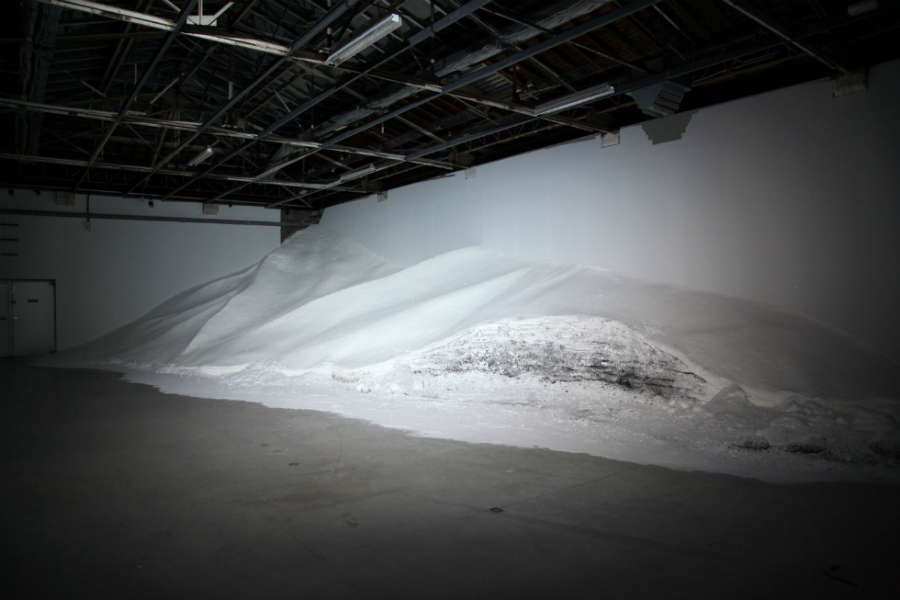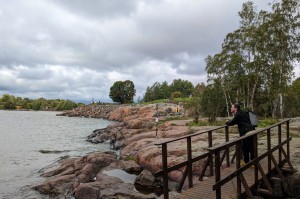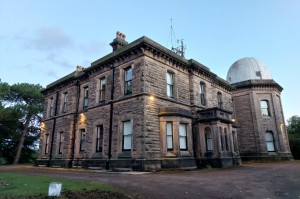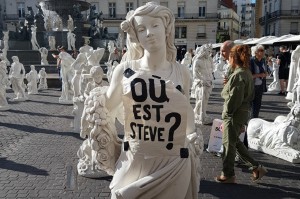Field Trip: Phillipe Parreno at The Palais de Tokyo, Paris

Emma Palmer leaves Paris and the surprises of The Palais de Tokyo feeling completely dazzled…
I was fortunate enough to squeeze in a visit to Paris for the closing weekend of Phillipe Parreno’s gargantuan exhibition Anywhere, Anywhere, Out of The World, in The Palais de Tokyo. I found that my experience at this ’anti-museum’ on the River Seine held far more impact that a visit to the city’s tourist spots or more well-known galleries. To be exposed to such a one-of-a-kind installation challenges your gallery-going expectations and will make everything you see after it pale in comparison.
Over a week after leaving Anywhere Anywhere I am still reeling from the affect the exhibition had on me.
Perhaps this is due in part to the sheer amount of time Parreno and his team spent creating the installation; an entire year was dedicated to re-designing the building, all 22,000 square metres of it. If you didn’t know how the Palais de Tokyo looked before, with its peeling paint and art deco features, you would think that the great blank spaces had always been there. Parreno aimed to remove the ‘cacophony of signs’ that threatened to distract from his installation; for the artist, the only signs you should read are the ones that he constructs.
Parreno is an artist for whom an artwork only exists for as long as it is exhibited and experienced, so each time a piece is shown, there presents a new opportunity for interaction; both with the architecture that houses it and with the visitors who go to see it. This way of viewing artwork, where each piece is only an artwork when there are people to see it, supports Parreno’s view that “the most important element is one’s own individual experience with the artworks”, and boy does Parreno provide an experience.
The installation at the Palais was nothing if not one gigantic assault on the senses. From start to finish, each space, tiny corner, crevice, window, corridor and even the temperature felt as though it had been tampered with to confuse and bombard you at every turn.
Light was used throughout to create an overwhelmingly disorientating experience, starting with your entry into the building, where a blinding white wall behind the front desk ensured your senses were heightened. Through every connecting walkway lurked another buzzing white light, like a singular streetlamp flickering on a dark footpath, leading you from one room’s darkness to another swamped in bright daylight. Your eyes never got the chance to adjust.
This onslaught came to a head during Danny La Rue (2013); an enormous black space which was intermittently lit by a series of ‘marquees’ – chandeliers made up of giant light bulbs and bars which appeared like UFO’s – growing in numbers until finally building into an intense crescendo of bright lights and scratching sounds, as though each marquee was exploding in a fight for your attention.
The disorientation caused by constant encounters with flickering lights was heightened by the sounds of a haunting staccato piano piece, discernable in every room, played by phantom hands on four pianos located throughout the exhibition. I have since learned that this sound was Mikhail Rudy’s solo performance of Igor Stravinsky’s ballet Petrushka (1911), which tells the melancholy story of a magician’s puppet who comes to life and develops emotions. In knowing this am I to believe that I was Parreno’s puppet? That my interaction and choice of path throughout the installation had been purposely choreographed, manipulated, and calculated by Parreno and his team?
Given that the space was specifically designed to remove any ‘signs’ which were not put in place by the artist, one cannot help feel that this could indeed be the case. Yet for me, this could well be a red herring, or only part of a wider message. I read the installation as a comment on popular culture, that we are all in some way manipulated by someone or something, and in that sense we never see the full picture. Just as within this exhibition, where you risk the chance of missing certain works — a hidden room behind a bookcase, pictures made of fading ink — we only see what we are invited to, what we dare to explore and thus each experience in the installation is unique.
For me, this theme of the manipulation of popular culture came to head with the melancholy video installation Marilyn (2012). Leaving Danny La Rue feeling as though I had been assaulted on multiple levels, I entered a peaceful space and found myself sitting down. The set-up impersonated the deceased Marilyn Monroe, depicting a séance in a suite at the Waldorf Astoria in New York. The camera took the position of your eyes and scanned the room as Marilyn narrated the scene. The film quietly intensified as the voice of Marilyn repeated itself, becoming more frantic and erratic. In the suite, a machine recreated her handwriting as though possessed, anxiously trying to communicate with the silent audience. The drama of this piece, as the machine and her narration became more frenzied in pace, came to a dramatic climax as the camera panned out to reveal that this scene was nothing more than a elaborate set — constructed, manipulated and designed to fool the eyes. The projection gradually flooded with light to reveal a snowdrift sitting frozen behind the projection (main picture). Was this Parreno’s comment on culture as a contrived form, how we are all deceived on a daily basis and may not even notice?
The artist said in a recent article that he’s “always tried to choreograph attention”; continuing that “this is what art can do – it can focus attention in a place.” Unlike many exhibitions, where the interpretation broadly leads the majority of the audience to form a similar reading of the artworks on show, the lack of any kind of interpretation or signage here meant that each person’s experience was totally unique. Undoubtedly your understanding would vary depending on your mood, art knowledge and current state of mind.
Throughout Anywhere, Anywhere, I found myself assessing my own relationship with autonomy and authority, believing that the manipulation of the space and my experience within it was key to my understanding of the installation as a whole. Parreno has never stated what the intended message of the installation was, and so I will never know if I truly ‘got it’. But I don’t think that matters.
Emma Palmer
More on the exhibition here and on Phillipe Parreno here
The Palais de Toykyo is located between the Eiffel Tower and the Champs-Elysées, open 12 noon to 12 midnight every day except Tuesdays





